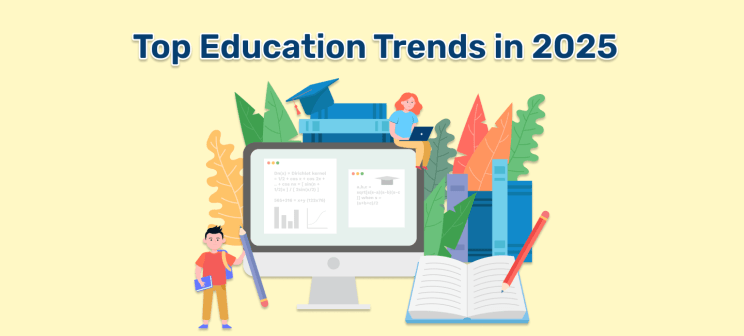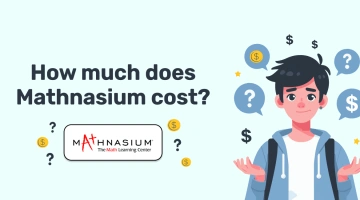Education Statistics and Trends 2025: Key Insights
reviewed by Jo-ann Caballes
Updated on September 22, 2025
Since the COVID-19 pandemic struck, and physical classes had to be suspended, the education landscape has changed. Online education has become the norm, and parents now feel more empowered to choose flexible and personalized learning options, especially in math, where traditional classroom settings still fall short.
In this article, I’ll explore top education statistics and trends in 2025 and how they’re opening doors to a more inclusive educational environment.
Education statistics and trends to watch in 2025: What’s changing?
- AI is transforming learning, but it won’t replace real teachers.
- Online learning is gaining popularity, and the trend won’t stop there.
- Gamification is now one of the most transformative learning trends.
What are the key online education statistics and trends for 2025?
- Online learning becomes more popular
- Gamification as a learning tool
- AI can serve as virtual tutors
- Mobile learning helps to engage and motivate students
- Video-based learning becomes more and more effective
- More homeschooling options are offered
- Soft skills become more important
- Educators provide alternative assessment
- The teacher shortage is getting worse
- Real-world, project-based learning is offered
Current trends in education 2025
Current trend in education #1: Online learning becomes more popular
One of the most popular emerging trends in education is the increasing popularity of online education. Our children are growing accustomed to using technology from an early age, especially as everything is getting more and more digitalized. When students are used to watching YouTube or scrolling through Instagram, having to sit in a physical classroom and listen to teachers for hours may become something they struggle with.
It’s not necessarily a bad thing, even though it may seem like it is. What changed is that our kids’ way of consuming information has changed, and therefore, what used to work for an older generation doesn’t work for them. Learning from a device, whether it’s a computer, a tablet, or even a phone, may seem like a more appealing way to learn.
Not only is it their preferred way of learning, but it also benefits their work-life balance (or, more accurately, school-life balance). Children who outsource their learning to online platforms have more time to pursue other interests. A study published in JMIR Pediatrics and Parenting found that children who learn online are also less stressed and spend more time with family and friends, resulting in better relationships and mental health.
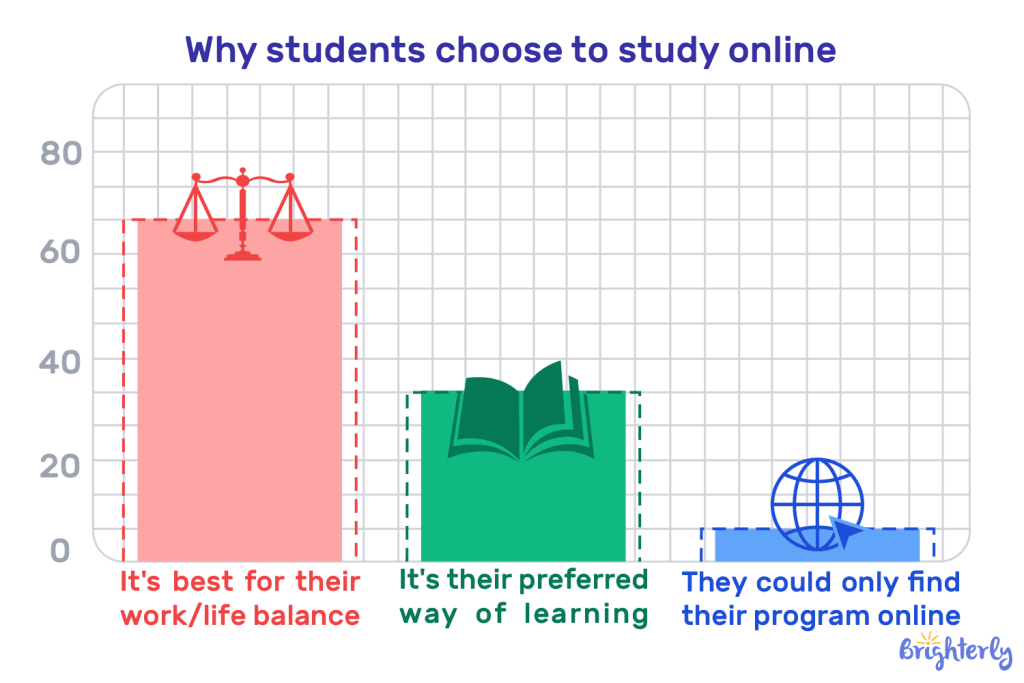 |
For example, Brighterly reading and math tutoring platform offers a personalized curriculum for every student, which is great for flexibility and convenience. This way, children can determine the best time for them and schedule structured classes at their own pace (and place!).
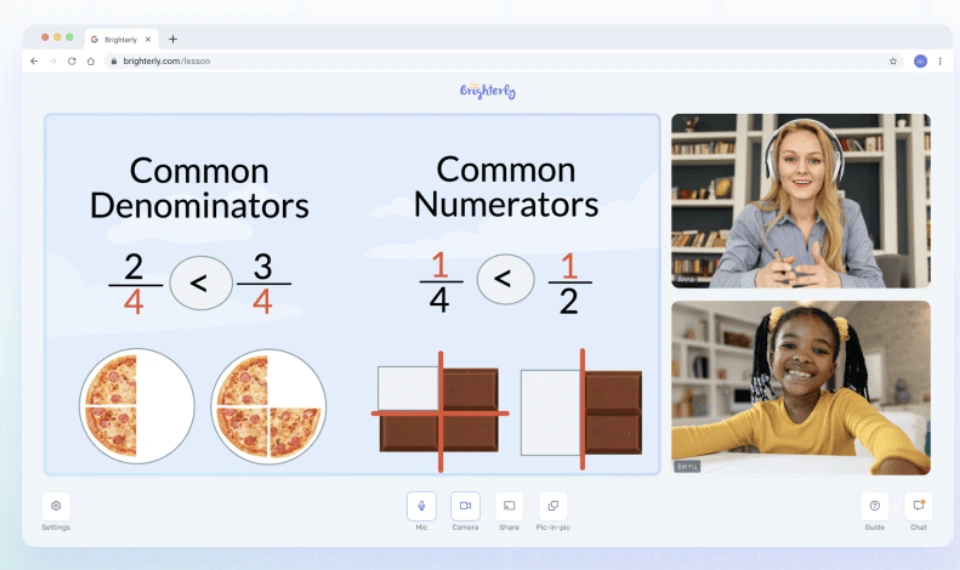
Brighterly is an online math and reading tutoring platform that specializes in interactive, one-on-one, adaptive classes with a tailored curriculum designed for each student, which is among the newest trends in education. It’s best suited for elementary, middle and high school students. Brighterly has a high level of trust and satisfaction (4.7 out of 5) with the tutors and the platform. This also suggests that Brighterly is keeping up with new trends in education to ensure high ratings.
Brighterly offers a flexible subscription model. This allows parents to select between 1 to 3 lessons per week based on their child’s knowledge gaps and learning needs and styles. The Brighterly cost per hour starts at $17.3, while the average hourly rate for traditional math tutors across the US is around $40, which is quite affordable.
Education statistics and trends 2025 #2: Gamification as a learning tool
According to the latest education trends, gamification is gaining momentum. As the in-classroom settings stop being obsolete, teachers look for new and engaging ways to teach. And leveraging technology seems like an obvious choice.
Studies show that 97% of youngsters aged 12-17 in the US played video games, and 11.6% spend 20 hours per week playing games. Evidently, games are a popular pastime that parents or educators cannot ignore. It is not surprising that teachers will utilize them in the curriculum. In fact, gamification shows promising benefits like motivation to explore learning outside the classroom, increased social engagement with peers, and improved soft skills.
So, as far as the education technology trends 2025 go, gamification stands out as a powerful approach.
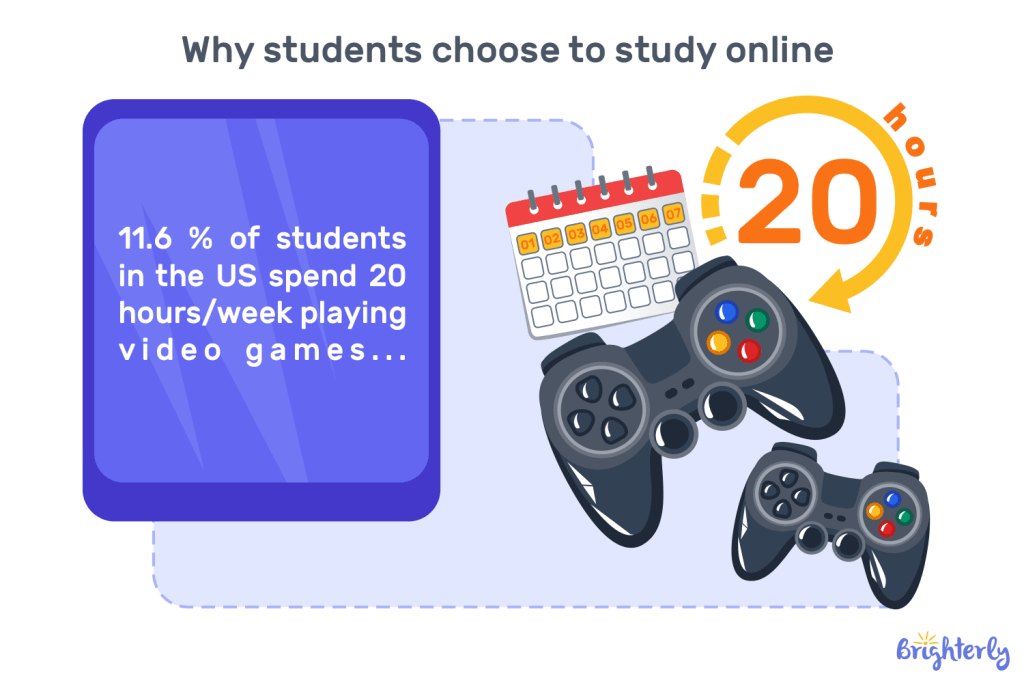 |
AI education trends 2025 #3: AI can serve as personalized tutors
Artificial Intelligence chatbots like ChatGPT can now serve as personalized tutors, and not only as foreign language tutors, but also as tutors for any subject a child may need. They offer instant feedback and are available anytime.
For example, if a student struggles with chemistry, they can receive instant help balancing chemical equations, practice naming compounds, or generate flashcards to memorize the periodic table. What previously required a couple of hours of work and several resources can now be done within one app. So, if you ask me, “What is the most exciting thing happening in education today?”, the answer will definitely be “AI as personalized tutors”!
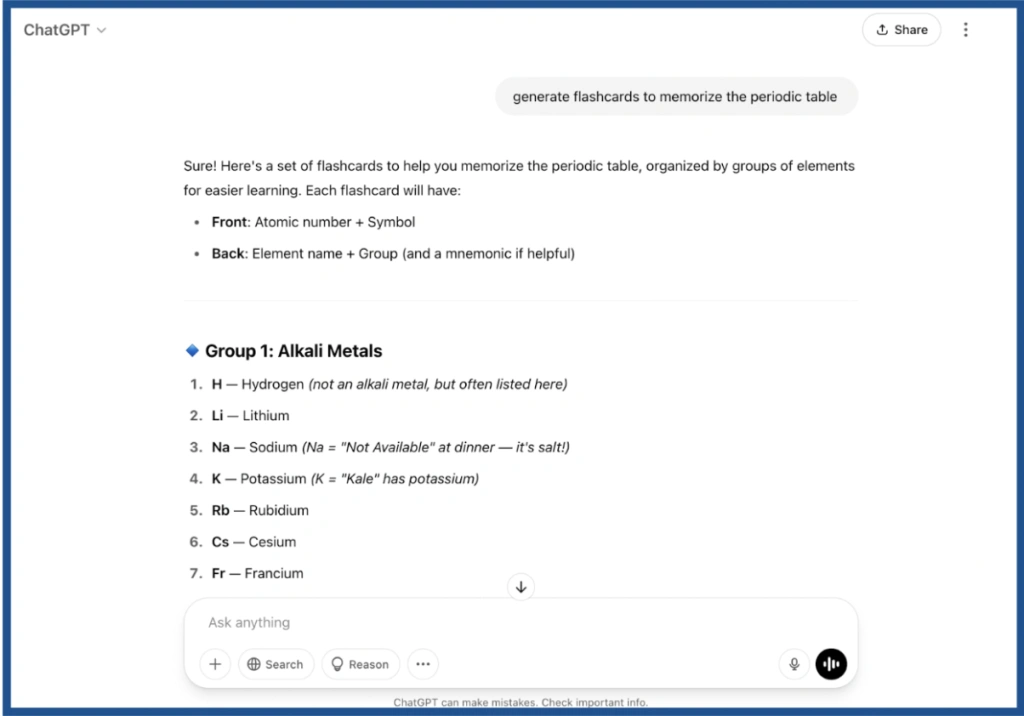
Example of an AI-generated flashcard.
Yet, this growing popularity does not mean that AI will replace tutors. Instead, AI will sere as an additional resource that can help students learn faster and try different learning approaches.
Trends in education 2025 #4: Mobile learning
Today’s learners can feel overwhelmed and distracted. With unlimited access to social media and endless streams of information, staying focused is something they just can’t do on command. According to Elucidad research, over 60% of learners prefer personalized, timely content that can be reviewed via a mobile device, whereas 56% learn on demand.
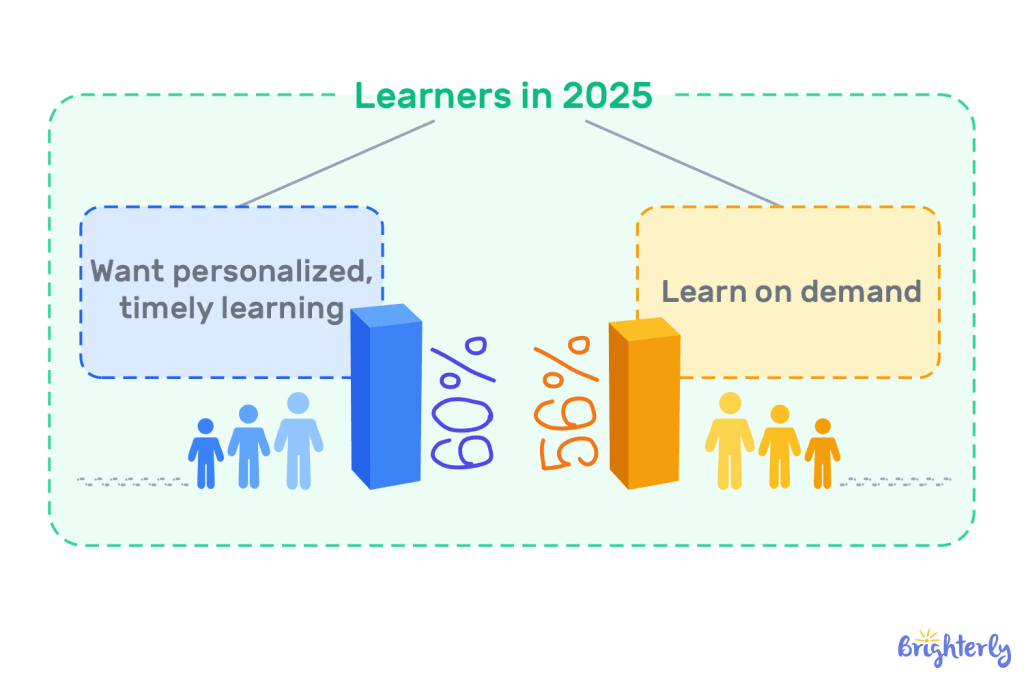 |
This is why I believe that mobile education is one of the most significant 2025 education trends, and can be a valuable learning resource in 2025 and onwards. For example, students can utilize images, quizzes, text, audio, video, and games to learn and review information anytime and anywhere. In addition, short and straight-to-the-point videos may be of help for students with short attention spans.
Global online education trends 2025 #5: Video-based learning
In a study by Pearson, 82% of Gen Z reported YouTube as their preferred learning platform compared to 67% of millennials. That practically means that the younger generation prefers video-based learning as their primary source of education.
In reality, on-demand online video learning is not a new thing, and has been around for quite some time. Yet, interactive video-based learning is now gaining momentum, and I could not ignore it in this overview of K-12 current education trends 2025.
This new format addresses several core issues people tend to have with video learning, like passive viewing and the inability to track students’ progress. Interactivity can help alleviate these problems by incorporating features such as embedded questions, navigation menus, keywords, and pointer phrases.
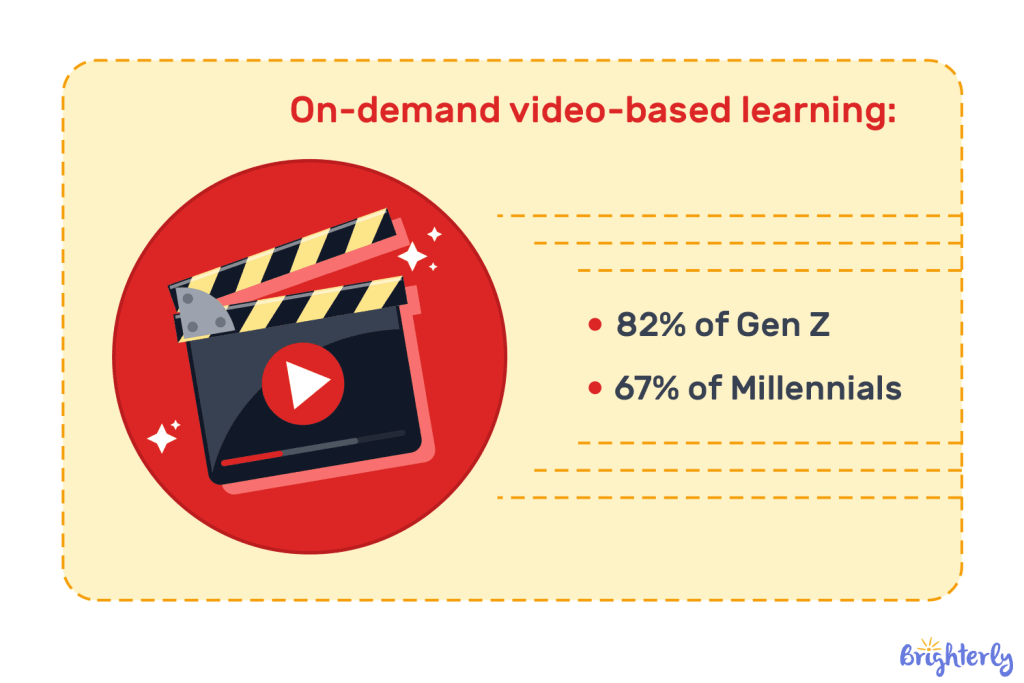 |
US education statistics 2025 #6: More homeschooling options
Approximately 3.4% of school-aged children in the United States are homeschooled each year. This drives entrepreneurs and startups to enter the homeschooling space and offer new possibilities for homeschooled kids.
Online educational platforms like Brighterly offer the following perks to homeschooling families:
- Adjustable schedule
- Personalized approach
- Better engagement
- Math worksheets
Additionally, Brighterly’s approach to mathematics is rooted in the understanding that every child is unique, particularly in their learning style. Its tutors are skilled in using adaptive methods, ensuring that your child feels comfortable while being homeschooled.
Not to mention, Brightly offers a comprehensive, US Common Core-aligned math program that is especially beneficial for parents, who no longer need to align their kids’ objectives to the existing curricula.
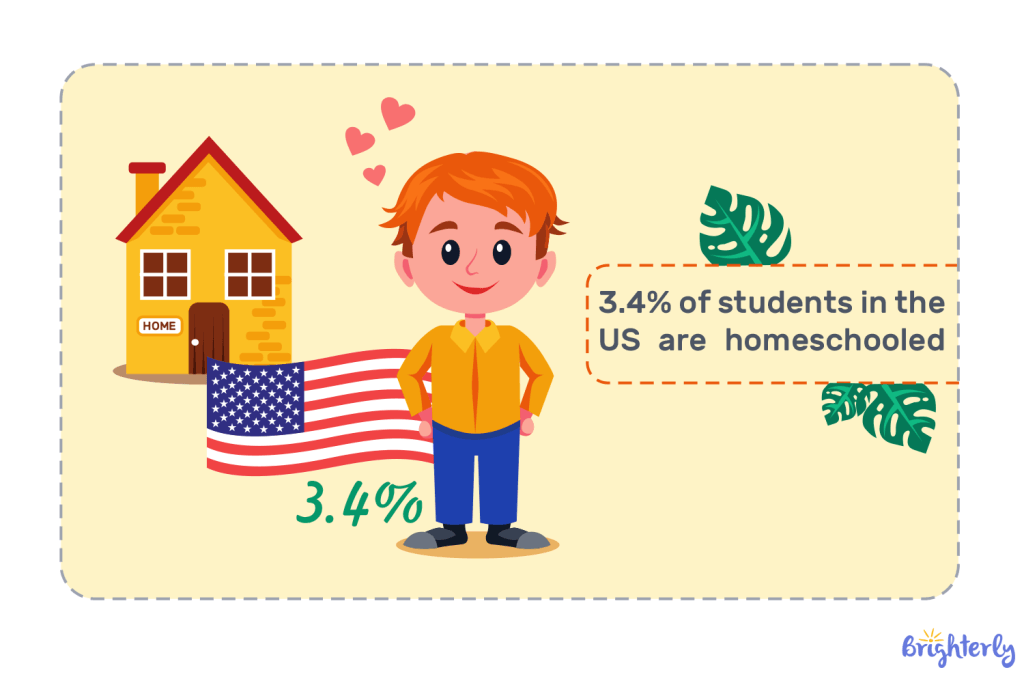 |
Recent trends in education 2025 #7: Soft skills
Developing soft skills in 2025 is as important as tech skills. Not to mention, more than 90% of HR professionals report that soft skills are crucial to the future of recruiting.
It may seem like a stretch, but soft skills are super vital to kids, too. Teamwork, communication, and problem-solving are among the most valuable skills they carry into adulthood, and those will influence how they build careers, relationships, and navigate real-world problems.
Soft skills are a crucial part of emotional development — they teach children how to resolve conflict, stay motivated to work hard, achieve better results, and focus on what’s important.
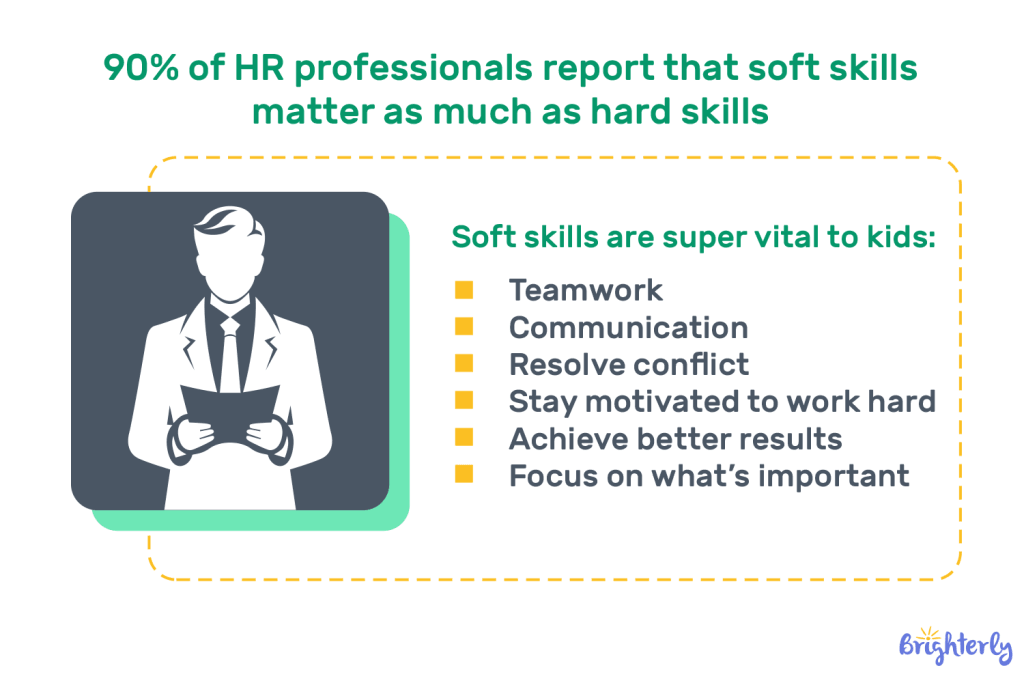 |
Top education trends in 2025 K-12 in America #8: Alternative assessments
In recent years, some educators began to doubt schools’ reliance on standardized testing. The State of Teaching and Learning survey from Instructure revealed that 50% of administrators and 58% of teachers believe this testing method is outdated and needs to be overhauled.
Among other reasons to opt for alternative testing are the following:
- Students from wealthy households perform better on standardized tests.
- Students’ GPA was a 5x stronger predictor of college graduation than their test scores.
- Many believe that standardized testing may be classist and racist.
In addition, a few institutions removed their SAT/ACT requirements for admissions, due to complications inflicted by the COVID pandemic.
Considering the abovementioned trends and issues in education, many educators decided to provide alternative assessments to their students. These may include: shorter tests and questions, short-cycle assessment at the beginning, middle, and end of the year.
For example, the Brighterly math tutoring platform offers short, comprehensive assessments (among other tools) that show overall understanding of math and potential learning gaps that need to be addressed during a math class.
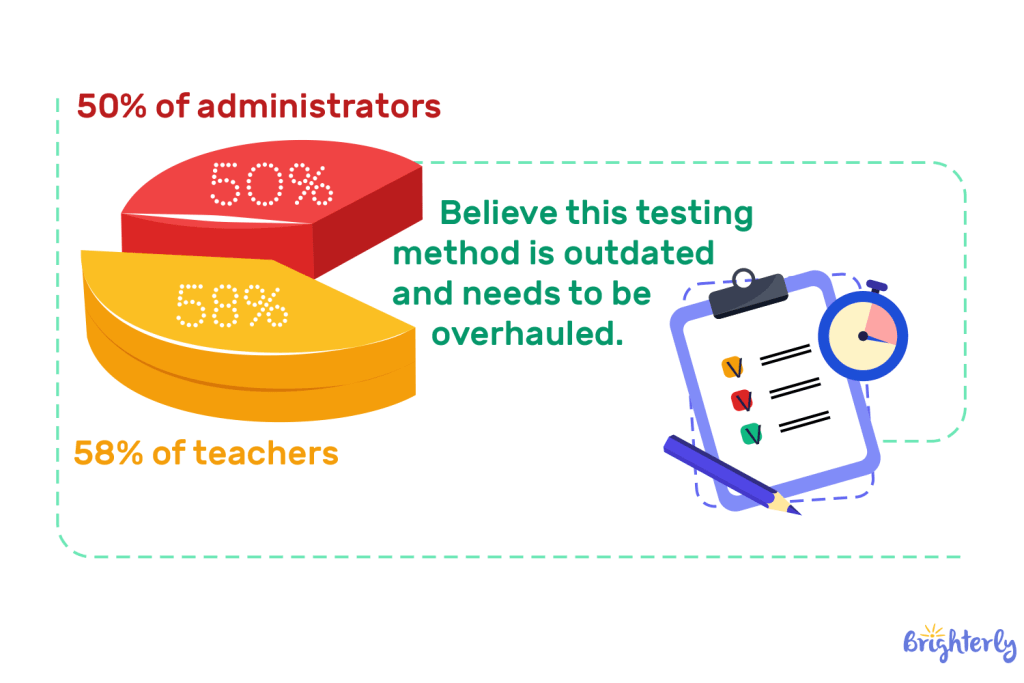 |
Early childhood education trends 2025 #9: Teacher shortage
Yearly, about 8% of teachers leave the profession. The research also indicates that 54% of teachers report being somewhat or very likely to leave their jobs within the next two years.
What does it tell us? The teacher shortage in the US is worsening, highlighting the drastic current trends and issues in education. Many US schools have already felt the change.
Why is this happening? There are several reasons for this:
- Low pay
- Rigorous qualifications for securing a first teaching position
- Shortages due to the COVID-19 pandemic
As of 2025, the teacher shortage remains a significant challenge and is unlikely to end this year. This is why many parents are already seeking supplementary education options, particularly in math.
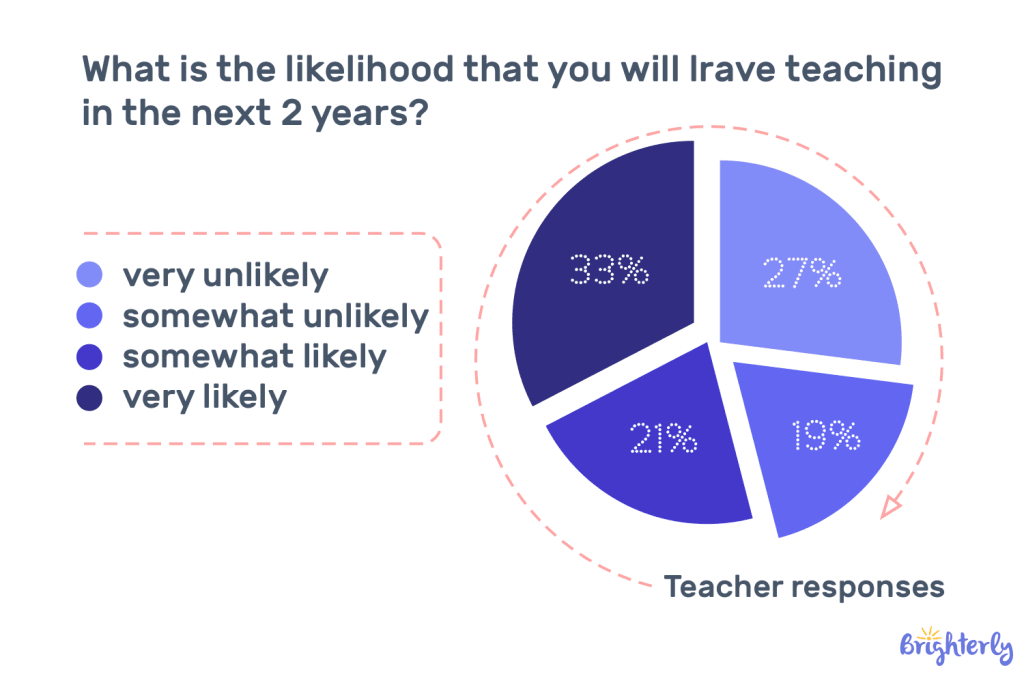 |
Current trend in education #10: Real-world, project-based learning
In 2025, K-12 education focus is on real-world, project-based learning. Educators report that rote memorization appears to be an ineffective teaching technique — this is why education is moving towards real-life scenarios as a main teaching technique.
On top of that, according to the Hammil Institute of Disabilities, children who receive math concepts through hands-on experiences are more likely to improve comprehension and memory.
For example, top online math teaching platforms like Brighterly prioritize utilizing hands-on experiences to boost children’s understanding of math. When kids see concrete ways of applying math concepts in everyday life and outside the classroom, they make a stronger connection to it.
What are the newest trends in education?
- Neuroeducation gains momentum
- Adoption of big data in education
- Independent teachers have more possibilities to teach
- Immersive learning experiences are now the norm
- Mental health and well-being integration
Top education trends in 2025 in America #1: Neuroeducation
Some of the common teaching techniques that are widely used across the world are now being called into question. These include:
- Memorization-based learning
- In-person lectures
- “All-purpose” lessons
- Unguided homework
To address these issues, neuroeducation (an interdisciplinary field that combines neuroscience, psychology, and education) is gaining momentum in 2025. Unlike traditional teaching techniques, neuroeducation practices are backed by the principles of neuroscience. This is one of the top future trends in education.
To put things in perspective, the interest has shown strong long-term growth, as you can see below.
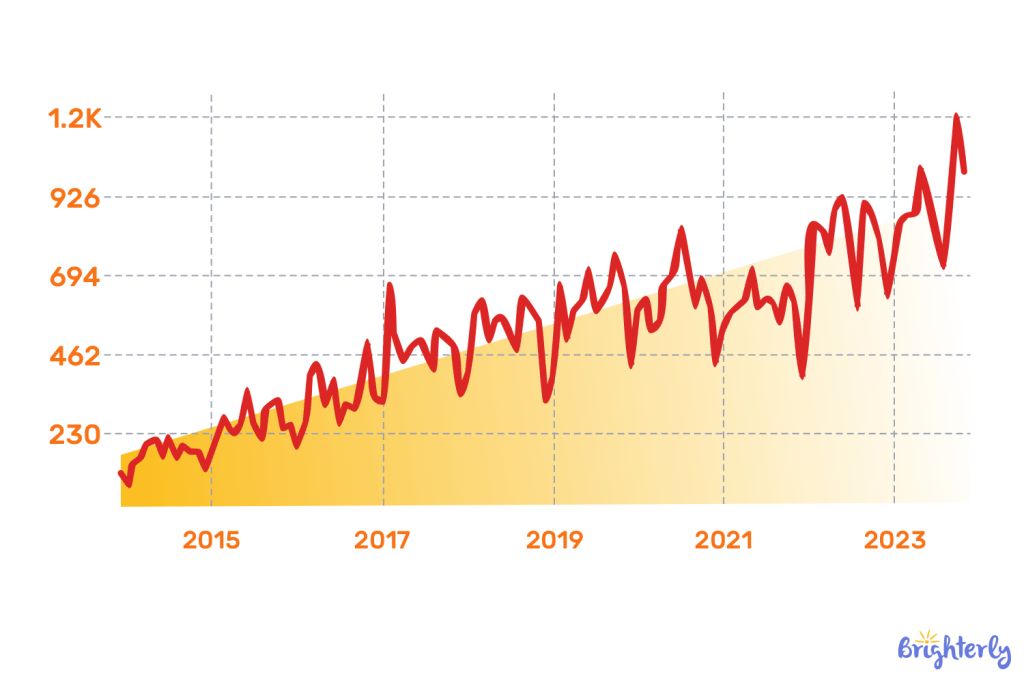 |
Top education trends in 2025 K-12 in America #2: Adoption of big data
What is the next big thing in education? In 2025, learning analytics will help enhance learning outcomes. Several colleges and universities have already been using learning analytics to understand and optimize learning outcomes, and most likely, it will be adopted in K-12 education.
In simple words, Learning Management Systems (LMS) can now track and measure students’ performance. Naturally, this technology can eliminate bias and give teachers a clear perspective of how their students are doing. LMS also helps teachers to see which parts of the course work well and which need improvement, potentially helping them to create more structured and easy-to-digest courses.
Online education trends 2025 #3: Independent teachers will have more work
One of the current trends in education for 2025 is that independent entrepreneurs are now launching more online courses than in previous years. As big platforms may take a cut of the revenue, many course creators and “infopreneurs” are now opting to sell courses directly from their own websites, thereby cutting out the middleman.
In the past, setting up a course meant having some level of tech skills with handling video hosting, payments, and member access. Today, online all-in-one platforms make it so easy for teachers to create and sell their courses directly to the users.
For example, search popularity for an LMS platform, Thinkific, has jumped 134% in five years, indicating growing interest among teachers.
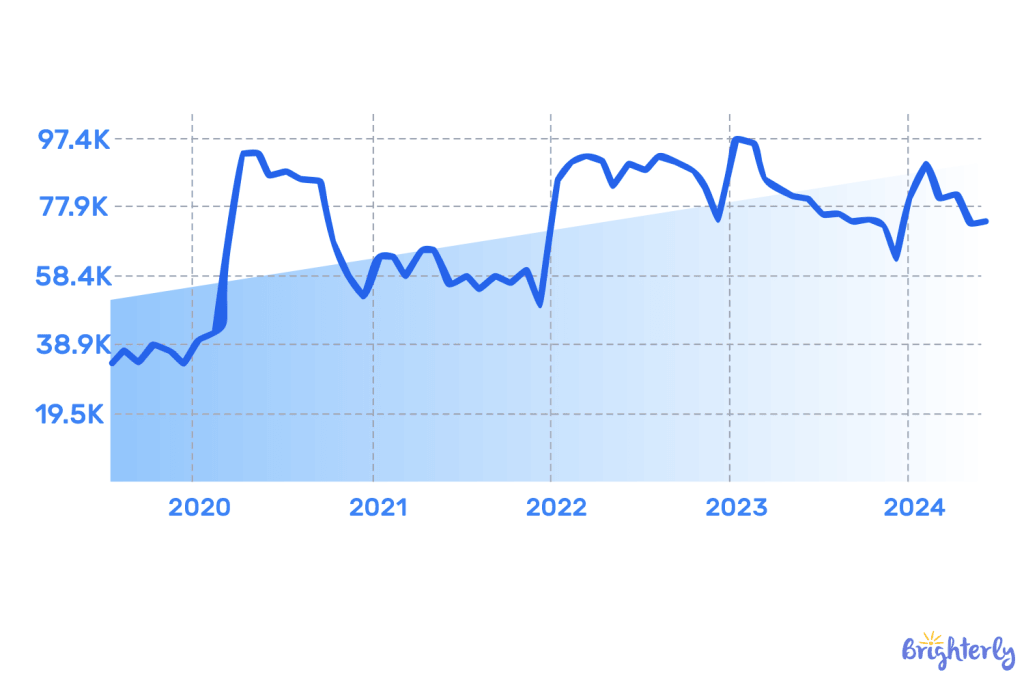 |
Current educational trends #4: Immersive learning
If 5G technology sounds like double Dutch to you, you’re not the only one. However, immersive experiences and 5G tech are set to revolutionize online education in 2025. Think virtual, augmented, and mixed reality (VR, AR, MR) — yes, it can also be applied in learning.
In fact, the 2019-2023 spending forecast for lab and fieldwork for higher education and K-12 is expected to grow at a CAGR of 190.1% and 168.7%, respectively (IDC, 2019).
In other words, educators expect more flexible and engaging learning environments with the growing popularity of 5G devices. This means immersive AR/VR lessons, faster feedback, and automation that lets teachers focus on meaningful interactions. On top of that, 5G offers faster downloads and smoother streaming, improving collaboration in remote and hybrid classrooms.
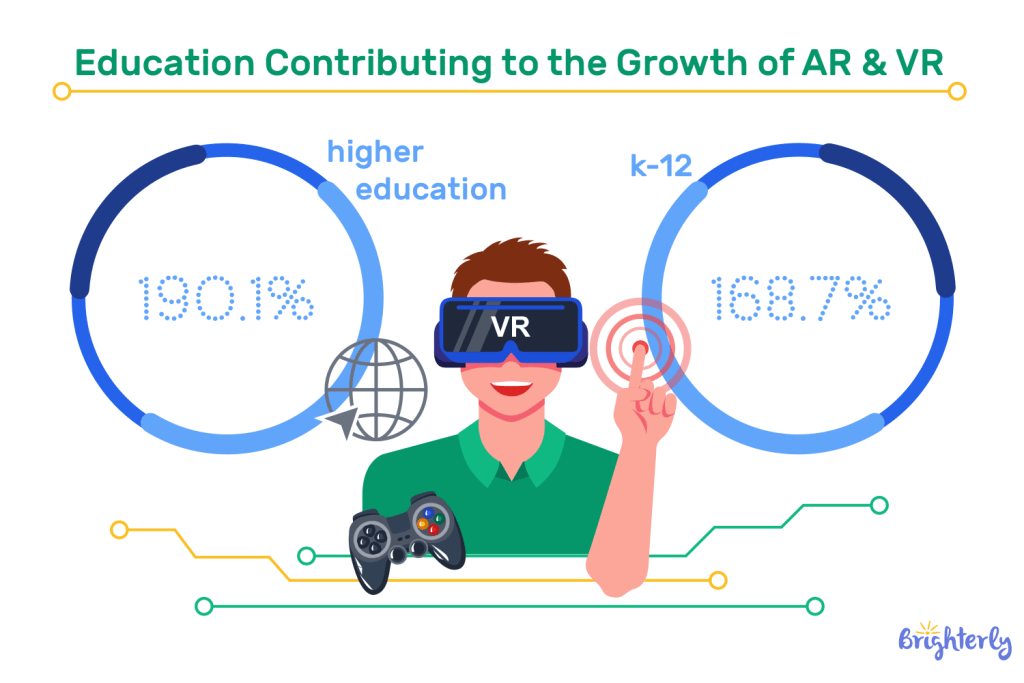 |
EdTech trends & statistics 2025 #5: Mental health integration
In 2025, mental health is no longer a side note in education — it’s becoming a core focus, and EdTech is rising to meet the moment. It’s not a new thing, though, as mental well-being was the focus of both education trends 2024 and trends in education 2023.
To back this all up, a recent study found that 58% of public schools reported an increase in students seeking mental health services compared to the previous school year. This all leads to an increased mental well-being integration in K-12.
Platforms are increasingly integrating features that support student well-being, such as mood tracking, mindfulness exercises, and AI-powered emotional check-ins. Schools and institutions are recognizing that academic success is closely tied to mental health, and tech tools are being developed to provide both educators and students with real-time insights and support.
From guided meditations built into learning apps to dashboards that help teachers identify signs of burnout or disengagement, mental health integration is shaping a more holistic, human-centered learning environment. As stigma around mental health decreases, expect to see EdTech continue blending emotional support with academic progress, helping students not just learn better, but live better.
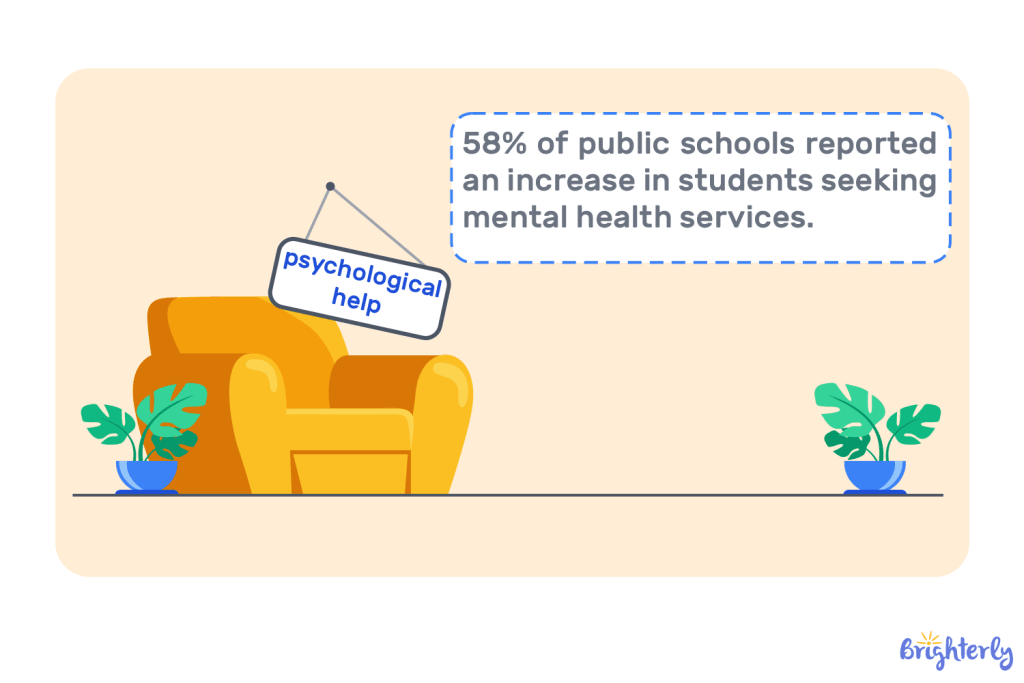 |
What will education look like at the end of 2025?
I believe the following education trends will shape how we’ll see the end of 2025:
- AI as personalized tutors
- Gamification as a main learning tool
- Mental health integration
- Teacher shortage in the US
- And the rise of LMS systems.
While the teacher shortage poses an obvious threat to the national education system, I see a lot of positive changes by the end of 2025: education becomes more accessible, equitable, and effective.
What is the next big thing in education?
As far as the abovementioned newest 5 trends in education go, I’d say that immersive learning is definitely the next big thing.
Let me explain: immersive experiences and 5G tech are coming together to transform how students engage with content. Immersive AR/VR lessons, faster feedback, and automation that lets teachers focus on meaningful interactions don’t just sound good — it’s going to revamp how we think of learning completely.
Conclusion
That sums up our list of the top education trends in 2025 in the US.
While you may think some of the current trends in elementary education (and beyond) are a stretch, I am positive that new technologies and approaches to learning are going to reshape education for good.
Yet, as we are still trying to battle the education issues we’ve been facing since 2020, it’s exciting to see where it’s all headed.

